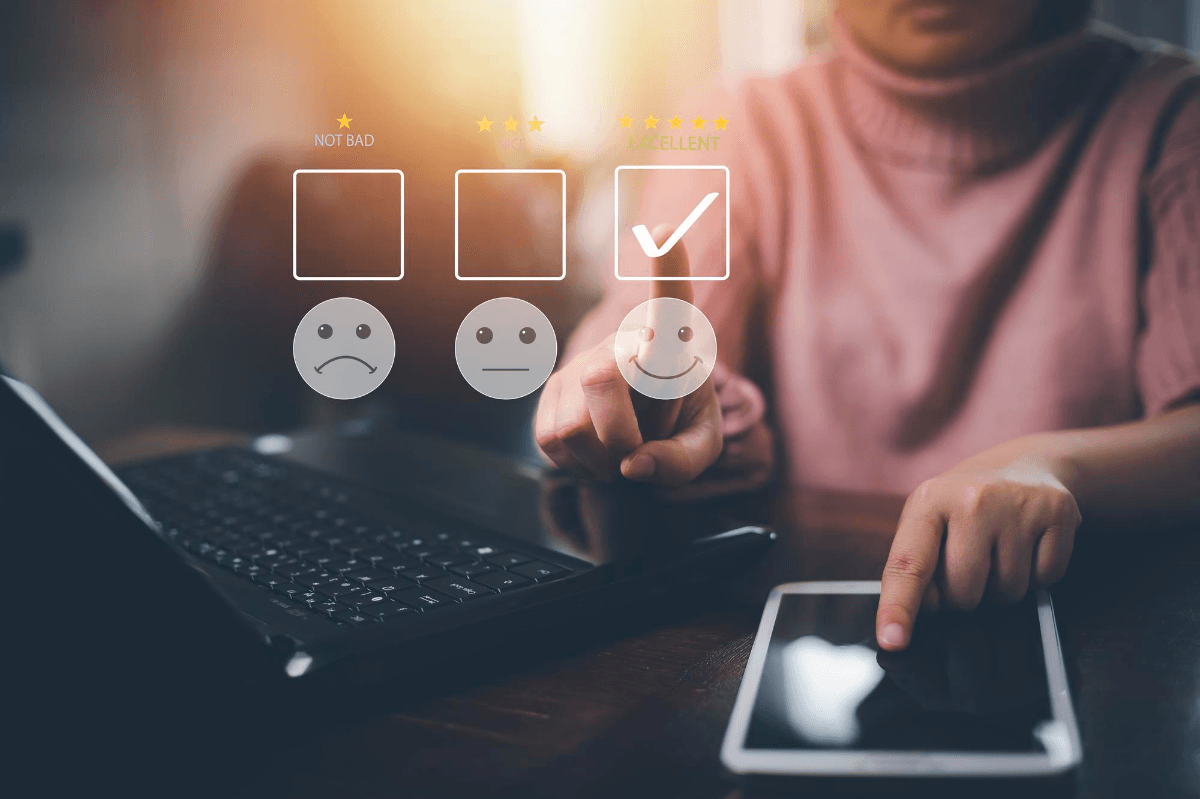Today, if we talk about the quality of healthcare, it doesn’t only pertain to the quality of care that a patient receives. Patients’ expectations today have changed, and so have the standards of patient satisfaction.
One common mechanism through which patients’ perceptions can be measured is by doing surveys, patient satisfaction surveys. Doing such surveys will help collect important patient feedback and will also offer opportunities to improve communication among healthcare providers, staff, and patients.
To stay competitive, healthcare service providers must know what their patients expect from them. They must be able to improve in a way that all developments are lined up with patients’ expectations.
Enhance your patient care with real-time feedback!
Start using our Patient Satisfaction Survey tools to drive quality improvement today.
And therefore, doing patient satisfaction surveys is one of the most effective tools that can be used to collect patients’ feedback and improve the quality of healthcare.
The Role of Patient Satisfaction Surveys in Quality Improvement
Patient satisfaction surveys are a powerful tool for collecting patients’ feedback. This survey method not only gives a satisfaction score but also highlights those areas that need improvement.
With patient satisfaction surveys, it becomes easier to ask patients directly what they expect and what would improve their experience at the facility. The following are the primary metrics that you can measure using patient satisfaction surveys:
- Accessibility
- Quality of Care
- The Efficiency of Hospital Staff
- Healthcare & Other Related Communication
- Features Related to Payment & Finance
- Facility & Hygiene
- Advancement & Use of Technology
Although these are some of the primary elements that affect patient satisfaction, you can conduct your own surveys as detailed as you want and collect feedback on all the metrics.
Now let us understand in a detailed manner how a patient satisfaction survey, in general, is used:
Efficient Planning
With efficient planning for patient satisfaction, a foundation is set for developing patient satisfaction surveys, which facilitates data collection, and helps in accessing data. The following are the important elements of the planning phase:
Build a Patient Satisfaction Team
A great patient satisfaction strategy benefits all departments including administration, infrastructure, finance, healthcare, pharmacy, etc. So, to get a complete perspective of your overall healthcare business, you can involve personnel who can present various functions within your facility.
A multifaceted, patient satisfaction team will give you an overall in-depth detail of various departments, that will help you identify performance indicators, and facilitate the application of feedback to improve the patient experience.
Fix Goals Beforehand
Patient satisfaction can be measured using patient feedback surveys; however, it is a detailed process. You will have to set goals beforehand, then only it will give you a clear idea about the success elements that you must incorporate while measuring patient feedback.
For example, if you want to optimize your mobile application or website, your survey questions must collect customers’ feedback on the interface and functionality of the platform.
Similarly, other goals will also help you shape your survey strategy and will allow you track progress from time to time.
Categorizing Patients Based on Their Journey
Patients are categorized into various segments such as inpatients, outpatients, and patients who require lab tests for diagnosis, who make appointments using the hospital’s website or healthcare app, etc.
And each segment of patients will have different experiences. So, it is important to keep in mind that the survey approach may vary for each segment of patients.
The main idea behind this approach is to make sure that different types of patient surveys are relevant for different segments of patients, and therefore they must be sent at the right time in the customer’s journey.
Collecting Customer Feedback
Collecting customer feedback either through the patient feedback app or any other source is an important step, because it can either make or break your patient satisfaction strategy.
The following are some crucial steps that must be taken to ensure that seamless and effective feedback collection is done.
Identify Channels to Collect Feedback
Since patients today are engaging with healthcare businesses through various channels, such as websites, on-site, social media sites, etc. It is important that you find out all the channels that you need to collect feedback from.
For example, if your patients are preferring to give their valuable feedback while on the premises, then you must collect feedback through mobile, tablet, or kiosk.
Suppose your patients are usually using your website to connect, then you may require to check out website surveys. Similarly, you can also send email or SMS surveys after the appointment is done or treatment is done and then collect the feedback data.
Choose The Appropriate Patient Survey Tool
You must choose a patient survey platform that must be aligned with your business requirements. For example, if you wish to send a survey through multiple channels, then you will need an omnichannel survey tool.
Similarly, you can compare your other business requirements against popular survey tools and find the one that would best work for you.
Here are some of the features that you might need in your patient survey software:
- A smart survey builder to build surveys
- Skip logic availability to do surveys that are relevant to different patient segments
- Omnichannel survey capability
- Reporting and analyzing features for insight generation
- Personalizing and branding feature
- Survey automation
Create Patient Satisfaction Surveys
Create patient satisfaction surveys with the aim to maximize your response rate. So, here are a few useful and important tips that would help you conduct effective surveys:
- Consider putting options like “Yes/No” wherever it is possible.
- Try keeping the survey short and relevant.
- Use skip logic to make surveys relevant.
- Customize surveys so that respondents will know that the survey has been created from trusted sources.
- Try to brand your survey so that respondents will be assured that the survey request form is from a trusted resource.
Choose Best Time to Send Surveys
Once your survey creation is done, the most important task you are left with is choosing the best time to send surveys.
For example, if a patient uses your website or mobile app to make an appointment, then it can be followed by a web or in-app survey to measure the success rate in terms of accessibility.
You can ask inpatients to take surveys on their mobile phones, tablets, or kiosks while they are on the premises.
Similarly, you can also share Email surveys after patients have visited the facility or after they are done with their treatment, to measure patient satisfaction. Just keep in mind that you have to send the survey to patients when the experience is still fresh in their minds.
Take Action
Once the patient feedback is collected, it is time to act on the data and use it to implement changes that can elevate patient satisfaction. Here’s how you can do it:
Once you have collected patient feedback, you must act on the data and use it to implement changes that can raise patient satisfaction. Here’s how you can do it:
Analyze Feedback
All the patient data you collect will be of no use unless you extract it into insightful reports. So, you have to make sure that the survey tool you choose, offers this functionality.
By doing effective reporting, you and your team will be able to find out:
- Patient expectations
- Areas where improvement can be made
- Complaints & suggestions that are coming repeatedly
- Customer feedback that are of High-priority
- So, you have to use this data to create a recovery plan to improve healthcare quality and patient satisfaction.
Close the Feedback Loop
One of the crucial parts of making quality improvements in healthcare is to allow patients to know that their feedback is very valuable to you.
Your patients must know that their feedback is actually being acted on, which will bring interest in them to take surveys, and also establish loyalty among your patients.
The following are a few things you can do to close the feedback loop:
- Take note of unsatisfied patients to know about their bad experiences.
- Always give your patients a clear timeline of when their issue will be resolved.
- Let your patients know that their issues are being resolved.
- If you couldn’t act on feedback immediately, offer an apology.
- Offer your patients rewards or discounts as a token of apology.
Conclusion
Although for conducting patient satisfaction surveys, time commitment and effort for healthcare practices are required, gauging patients’ perceptions is a crucial element of patient-centered care.
The feedback generated from patient satisfaction surveys can provide meaningful insights and help in identifying potential problems and service gaps.
So, if you implement patient satisfaction surveys effectively and act on the results, it will surely demonstrate the practice’s commitment to patient experience and high-quality care.








